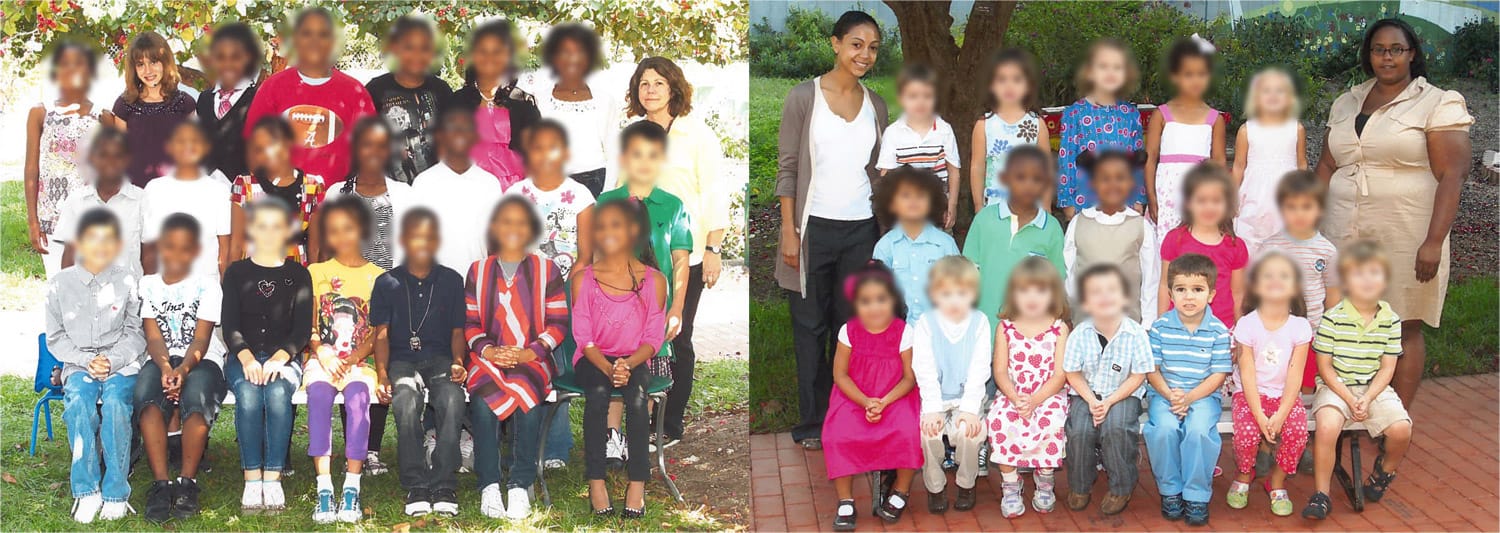Guest blogger Candice Santomauro is a parent of District of Columbia Public Schools students and director of development at GreatSchools.
In 2008, what little I knew about D.C. education came from a Time magazine article, the one with the now-infamous cover featuring Michelle Rhee with a broom. Sitting comfortably in my Florida home with my children safely ensconced in a posh private school, I remember thinking how sad it was that the situation was so dire for the children of our nation’s capital. But we were white, made good money, and lived in the suburbs, and Washington’s challenges seemed a world away.
I remember thinking how sad it was that the situation was so dire for the children of our nation’s capital.
Fast-forward to 2009, our lives turned upside down by the economic tumble, exacerbated in Central Florida by a huge housing bubble having burst and the diminishing space program, we found ourselves relocating to D.C. I accepted a position with a small private school in Southeast Washington, ironically just a few blocks from some of the schools profiled in the Time article.
My then-seven year old would attend there as well, as we had known nothing else but private schools, and her tuition was a perk of working at the school. This private school was different, though, as it was 100 percent African American, attended by many D.C. Opportunity Scholarship recipients and children of low-income families whose tuition was supported by external foundations and private donations.
Every day after school, as she’d happily bound into my office, blond hair streaming, confident, I’d ask the obligatory, “How was school today?” although what I really wanted to ask was, “Are you OK with being the only white kid?” She seemed either not to notice or not to care. Having grown up myself in an ethnically, culturally, and socio-economically diverse Los Angeles suburb, I hoped she would have a similar experience. I wasn’t sure though, if this was pushing it a bit. Finally after a few weeks, I had to ask. She responded, “Mom, we’re all just kids.” Oh, right. Out of the mouths of babes.
Over time, as I planned to take a new job, I entered the confusing and complex world of D.C. educational options. I decided to tour a (gasp!) public school, moreover a DCPS public school (double gasp!) in our gentrifying Capitol Hill neighborhood, and was floored. This school was comparable to, if not better than, the Florida private school for which I had forked out a small fortune over the years! It had it all: amazing teachers, strong academics, incredible leadership, a superb facility, state-of-the-art equipment, great extracurricular activities, happy kids. And diversity. Because of the open enrollment policy in DCPS, there were a number of out-of-bounds families that were a part of the school, many coming from less-affluent areas. I enrolled my daughter immediately.
During third and fourth grade, enrollment in her class was steady. However, in fifth grade it dropped off, with many families, and almost all of the white ones, opting to pull their kids out to get spots in local charter schools. Unfortunately, the quality middle school options are scarce in D.C., and the turnarounds seen in DCPS elementary schools have not happened yet for middle schools. I was not savvy enough to realize that it is nearly impossible to get a spot in a quality charter school in sixth grade. So, we stayed put for fifth grade, where my daughter was now one of two white students.
The same year that my daughter entered fifth grade, my three-year-old son began Pre-K. The demographics of his class, however, were completely reversed. It seems that because our neighborhood has become gentrified, there were only three African Americans in his class.
 |
The stark difference really hit me when their class photos came home. Then I started to notice the difference on the playground. Look right to the older-kids’ playground: lots of diversity. Look left to the preschool playground, and the kids were primarily white. Frankly, I’m not sure how I feel about this. Selfishly, I’d like my son to have the same experience that his sister has had. And what of the out-of-bounds families who want to attend a quality public school, but can’t because no space exists? (Admittedly, this is a much bigger issue than my own “first-world problem” of wanting my children to experience the richness of diverse relationships.)
I certainly don’t have the answer, but I believe it boils down to the overall lack of quality educational options. We need great schools for all D.C. children, not just those in gentrifying neighborhoods. Until that day comes, we all pay the price.